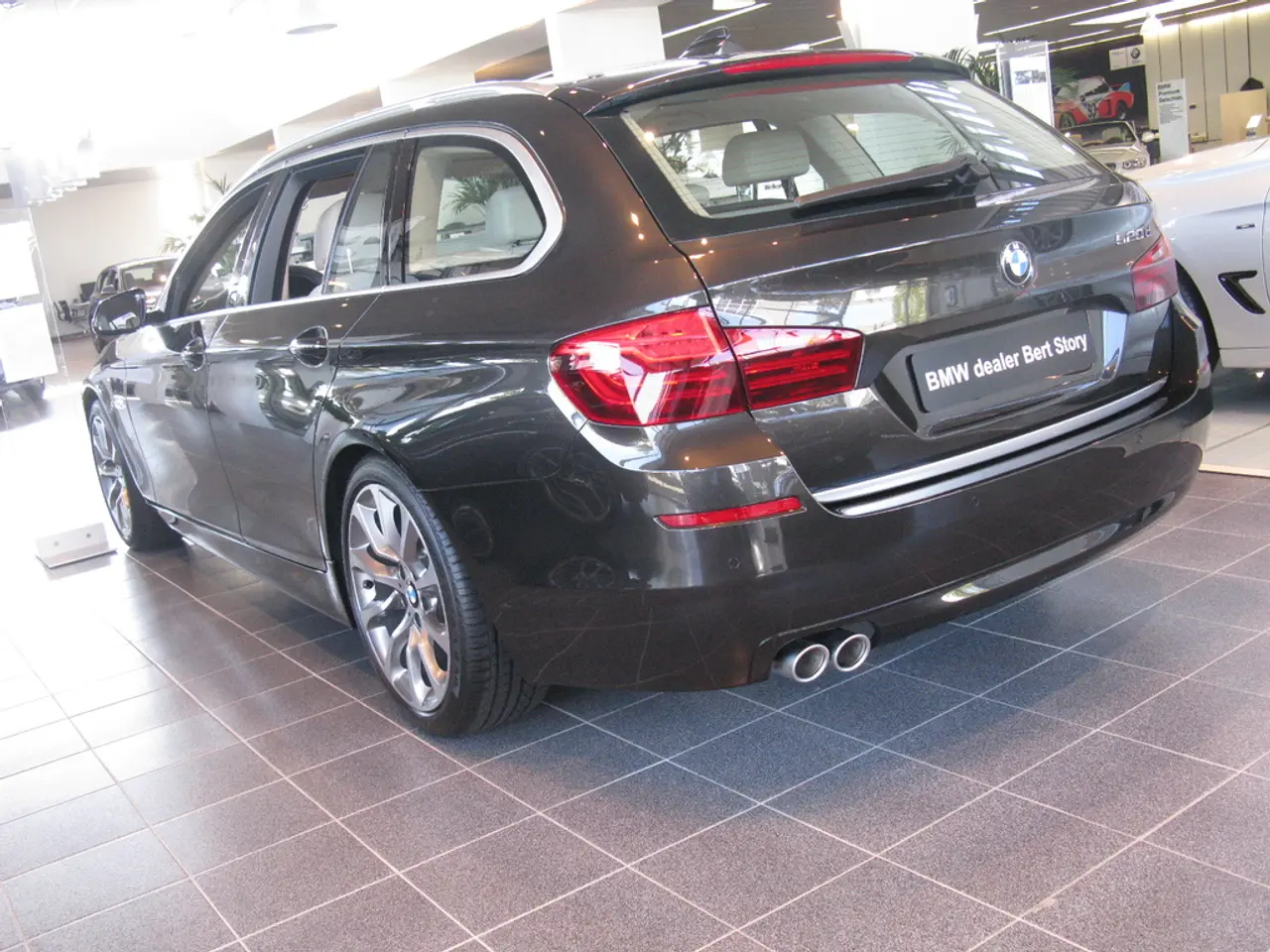Increasing Trend Downthe Globe: A Growing Number of Individuals Opt for Electric Vehicles Over Long Distances
The automotive landscape is witnessing a significant shift as more frequent long-distance drivers embrace electric vehicles (EVs). This trend is driven by multiple factors, including improved vehicle range, expanding charging infrastructure, and growing consumer confidence in EV technology.
One of the primary catalysts for this shift is the increased driving range of new electric cars. Many models now exceed 300 miles per charge, addressing the need for extended range to avoid frequent charging stops. This range improvement enhances the practicality of EVs for long-distance travel, addressing one of the primary concerns for these drivers [4].
The growth of fast-charging infrastructure, particularly along highways and in major corridors, is another key factor. This expansion reduces range anxiety and enables convenient long-distance travel. Programs supporting vehicle-grid integration and smart charging also optimize charging availability and reduce costs [3].
Lower total costs and incentives have also played a significant role in the growing adoption of EVs. Falling battery prices have made electric vehicles more competitive with traditional internal combustion engine (ICE) cars. In some regions, tax credits and incentives encourage EV purchases, further motivating adoption [1][4].
As drivers gain firsthand experience with EVs, their concerns about battery life, range, reliability, and technology tend to fade. Loyalty among EV owners remains high, and many frequent long-distance drivers join the EV user base after positive personal experiences [2].
Regulatory pressure and market momentum are also driving the trend. Emission standards in markets like the EU and China promote zero-emission vehicle sales, accelerating EV uptake. Organic consumer demand, especially in China, has overtaken earlier policy-led growth, signaling broad acceptance that supports long-distance and frequent drivers [1][4].
Although adoption growth rates differ by region—with China and Europe leading global sales increases—improvements in technology, infrastructure, and user acceptance are key elements enabling more frequent long-distance drivers to switch to electric cars [1][5].
Market leaders like VW, BMW, and Mercedes are releasing models designed for long-distance driving, such as the VW ID.7, BMW i4, and Mercedes EQE. The fast-charging network for electric cars has improved significantly, reducing charging times for long-distance drivers [6].
The development of more frequent drivers choosing electric cars is a clear signal that range anxiety and charging frustration are losing their influence when it comes to long distances. Electric cars are becoming increasingly practical for long-distance driving due to improvements in range, charging, and comfort [7].
This trend is a significant shift in the automotive industry, with frequent drivers who travel more than 20,000 kilometers per year increasingly choosing electric cars. This percentage is a third higher than that of infrequent drivers, who account for 4.2 percent [8].
Skepticism among frequent drivers towards electric cars appears to be decreasing, with more and more choosing to drive electrically. Eighty percent of long-distance professionals who already drive an electric car plan to choose a plug-in car for their next vehicle [9].
In the second quarter of 2025, 6.1 percent of long-distance drivers chose a pure electric car when they last changed their vehicle [10]. The network of fast-charging stations on highways is improving, and new battery technologies significantly reduce charging times for electric cars [11].
New figures show that more and more frequent drivers are switching to electric cars and prefer to drive electrically. The E-Barometer of HUK Coburg from the second quarter of 2025 indicates a growing preference for electric cars among long-distance drivers [12]. As the trend continues, electric cars are poised to become the preferred choice for long-distance travel, offering lower energy costs, less maintenance, and a more sustainable future.
- The increased driving range of electric cars addresses the need for extended range, which enhances their practicality for long-distance travel and alleviates concerns among frequent drivers.
- The expansion of fast-charging infrastructure, particularly along highways and in major corridors, enables convenient long-distance travel and reduces range anxiety for electric vehicle drivers.
- Falling battery prices and incentives like tax credits and credits in some regions have made electric vehicles more competitive with traditional cars, encouraging their adoption among a broader audience, including frequent long-distance drivers.
- As drivers gain firsthand experience with electric cars, their concerns about battery life, range, reliability, and technology tend to fade, and many become loyal EV owners, even for long-distance driving.
- Regulatory pressure and market momentum are driving the trend towards the adoption of electric vehicles, with emission standards promoting zero-emission vehicle sales and organic consumer demand, particularly in China, signaling broad acceptance among frequent long-distance drivers.




